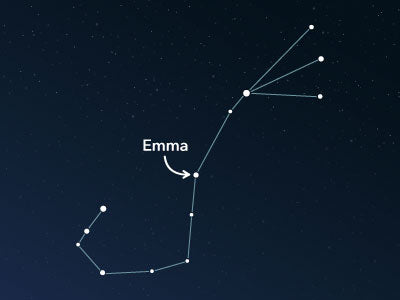The constellation Scorpius
Characteristics
- Other names / Symbolism
- Scorpion
- Hemisphere
- Southern hemisphere
- Visibility
- January - September
- Area
- 497 deg²
- Brightest star
- Antares (HIP number 80763)
- Specialties
- Open star clusters, globular clusters, planetary nebulae, emission nebula

Scorpius, Latin for Scorpion, is a prominent zodiac constellation particularly well-known in astrology. It is one of the 48 constellations described by the Greco-Roman astronomer Claudius Ptolemy in antiquity. There are numerous exciting deep-sky objects located in this area.
Hemisphere, visibility, and area
The Scorpius constellation lies in the southern sky and can be observed from the entire southern hemisphere. North of the equator, it is fully visible up to the 44th parallel. Therefore, it can only be seen from places south of cities such as Bologna in Italy, Minneapolis in the United States, or Toronto in Canada.
In southern regions, the constellation can be observed between the months of January and September, with May to August providing the best view. In northern areas, the period from May to August is also the best time to observe the constellation.
The Scorpius stretches over an area of approximately 497 square degrees in the night sky and is ranked 33rd in size compared to all other 88 constellations. It lies on the ecliptic and is, therefore, one of the 12 zodiac signs.
From an astrological point of view, all living beings born between October 24th and November 22nd have the zodiac sign Scorpio. However, this period was defined thousands of years ago using the sun's path through the constellation. Astronomically, this period is now much shorter and slightly shifted. Due to the earth's precession, the sun passes through the Scorpius constellation only from November 23rd to November 30th.
Seven other constellations surround the Scorpius. Along the ecliptic, it is bordered by Libra and Sagittarius. To the north lies the large Ophiuchus. In addition, the Lupus, the Norma, the Ara, and the Corona Australis are located in the immediate vicinity.
Specialties in the constellation
The Scorpius constellation's sky area lies near the Milky Way's center, resulting in several nebulous objects, including open star clusters, globular clusters, planetary nebulae, and an emission nebula.
M7 (Messier 7), also known as NGC 6475, is one of the brightest open clusters in Scorpius. It has an apparent magnitude of roughly 3.3 and contains approximately 100 stars. Claudius Ptolemy first mentioned the star cluster in 130 AD, which is why it is often referred to as "Ptolemy's Cluster." The object can be observed northwest of the bright star Shaula (Latin: λ Scorpii, Lambda Scorpii).
Together with the open star cluster M6 (Messier 6), which is often referred to as the Butterfly Cluster, M7 represents one of the most impressive open star clusters in the northern hemisphere.
On the other hand, NGC 6302 is the catalog designation for a planetary nebula in Scorpius. It is also known as the Bug Nebula. It has an apparent magnitude of about 9.6 and is only visible with professional equipment. NGC 6302 is located about 4,000 light-years away. The American astronomer James Dunlop discovered it in June 1826. Impressive structures are visible in astronomical photographs.

History and mythology
During Sumerian times, the constellation was associated with Išḫara, the goddess of war. In pre-Columbian Latin American civilizations, the constellation was already associated with a scorpion. Just as Claudius Ptolemy, who included it with the name Scorpius in his description of the 48 ancient constellations.
In Greek mythology, there are many different accounts. In one, Artemis sent the scorpion to kill Orion. The hunter Orion had planned to kill all the wild animals, which displeased the goddess of the hunt.
According to another version in ancient Greek, it was Apollo who sent the scorpion, but for different reasons. Out of jealousy, he wanted to kill his friend Orion because Artemis was attracted to him.
PublishedRead more interesting articles

An overview of all 88 constellations
Learn more about all 88 constellations and read interesting information about the mythology, visibility, and features.

Planetarium App
Discover the night sky with our planetarium app!
Available for iOS and Android.

Name a star in the constellation Scorpius
Name a star in a constellation and create something that lasts for eternity.